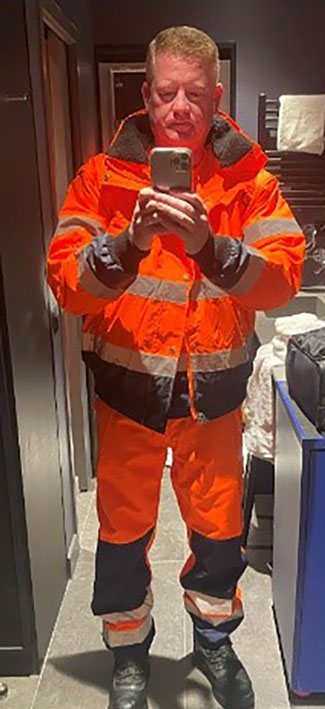What I learned about company culture while dangling 350 metres down a mine
Andrew Marsh of the Artemis Income Fund says that while meeting with management teams is useful, to build a fully rounded picture of a company, you have to spend time with employees at all levels – quite literally, in some cases.
There is – so I’ve been told – a trend on short-form video site TikTok where users post a freezeframe of themselves in a bizarre or dangerous-looking predicament, accompanied by the phrase: “Yep, that’s me. You’re probably wondering how I ended up in this situation.” Last month, when I found myself dangling at the end of a winch 350 metres down a mineshaft in Yorkshire, I couldn’t help wondering how I ended up there myself.
In the spirit of the ‘80s and ‘90s television programmes that inspired the social media craze, let’s take a few steps back and look at some of the decisions that led me to that point.
Me and the other managers of the Artemis Income Fund aim to invest in businesses generating sustainable and growing free cashflows, which should result in a sustainable and growing dividend over the medium to long term.
But gauging the sustainability of cashflows is not an exact science and often relies on intangible characteristics that don’t appear in financial statements.
These can include ownership of intellectual property or brands, relationships with suppliers, good distribution channels and company culture. The latter of these in particular has been one of the most prevalent themes among our most successful investments in recent years.
There is no shortcut to working out the difference between good and bad company culture. Meeting with management teams helps to some extent, but to build a fully rounded picture, you have to spend time with employees at all levels – quite literally, in the case of Anglo American’s Woodsmith polyhalite mine.
Environmentally friendly fertiliser
Anglo American has been a core holding in the Artemis Income Fund for some time, so it didn’t come as too much of a surprise when the company invited me to visit Woodsmith, which is based in the North York Moors National Park.
But it’s amazing how quickly that feeling can change when you find yourself being lowered 350 metres underground. I learned a lot about risk management as well as company culture that day.
So why was I there?
Polyhalite is a naturally occurring fertiliser that requires no processing and therefore has a much smaller carbon footprint than more typical, processed fertilisers. The mine and its infrastructure remain in development and no polyhalite production is expected until 2027, but thereafter could produce 13 million tonnes per year until the 2070s, as per Anglo American’s estimates.
The stockmarket currently ascribes no value to the project and a recent article in the FT expressed some scepticism towards it. However, Anglo American’s chief executive Duncan Wanblad claims that Woodsmith will be a “cornerstone, long-life” asset on “the lowest quartile of the cost curve”, capable of “delivering strong cashflows for many, many decades”1.
Local pride
Aside from seeing the size of the asset first hand, what really stood out that day was the culture of the business.
The project employs 1,600 people, many of whom are local and incredibly proud to be involved in this mine. This partly stems from Anglo American’s ESG practices, with the company working with the North York Moors National Park Authority to minimise its environmental impact, and paying compensation to offset any damage it does cause.
Even more memorable was meeting people that have travelled from Anglo American’s operations across the world: from copper mines in Chile; the company’s many operations in South Africa; and Europe, from where engineers have brought the expertise to build a 35km underground tunnel that will carry polyhalite from North Yorkshire to the River Tees for export.
The bottom line
It’s probably not immediately obvious how this culture affects the bottom line for investors. But from the time I spent at Woodsmith, it became clear how important it was to everyone involved that the project was delivered to schedule. The culture of the company, including a focus on creating value for all stakeholders, is vital in ensuring this is possible with a project of this scale and longevity.
I wouldn’t have realised this if I hadn’t seen it first hand, but among several mining analysts, I was one of the few (if not the only) investors on the trip.
And I got a nice photo to prove it. If I’m being honest, TikTok isn’t really my style.


